Installation View: Indonesia, Orienti Visioni Contemporanee at Villa Ada Festival

At the beginning of 2012 I started making research about Indonesian contemporary art and now I’m excited to had the chance to introduce some of these amazing artists to an Italian public through “Indonesia – Orienti Visioni Contemporanee” , a series of screening of video art in Villa Ada’s Art Project Space.
For this screening, part of MNAO Contemporary program, I wanted to show three completely different approaches to video art, presenting new-media pioneers Krisna Murti and Tintin Wulia, and the most irreverent bunch of punks in the whole Asia-Pacific, namely Punkasila and Slave Pianos.
Despite the title of the program, I tried to steer away from any kind of representation of “Indonesianess”. Krisna Murti makes an aesthetically mesmerizing observation on traditions slowly fading away. On the other hand, Tintin Wulia’s way of working goes beyond her nationality, in fact she works around the concept of nation and national boundaries itself. Punkasila and Slave Pianos, joining forces just like a crossover from some comic book, give space to their wildest fantasies, imagining an alien invasion starting from Java.
So, here a preview of what you will see this week if you happen to pass by the Art Project Space in Villa Ada.
Krisna Murti – Empty Theater
Video installation (multi-channel video), DVD 3 projections, 3’58’’, loop, sound, 2010.

This video shows 9 characters from the Ramayana and Mahabarata epic stories: Kresna, Hanoman, Arjuna, Sinta, Pergiwati, Srikandi, Gareng, Petruk and Bagong, all performed by the artist himself. These characters usually appear in a wayang wong performance—which is the inspiration for this piece—a form of traditional Javanese dance theater that was popular in urban areas until the 1970s. However unfortunately, today it is on the verge of bankruptcy. While on the other hand, forms of traditional arts such as this are now often performed as part of the cheap entertainment industry and only for show. This piece is performed with stiff movements, with empty facial expressions and body distortions – resulting from technological manipulation (digital) – to match the rasping sound of the rebab. The figures are presented as mannequins on a “showroom” stage, trying to move and come to life but it is futile, they are cracked and destroyed. A loop strengthens the absurdity of the situation in this video. To create this video, Krisna worked together with the director, Widayat and his group: Wayang Orang Ngesti Pandowo in Semarang (Central Java). This piece was shown in Jakarta (2010).
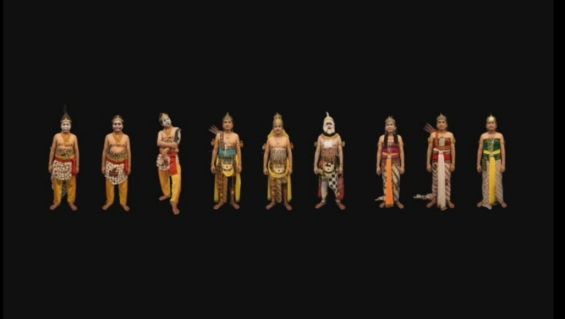

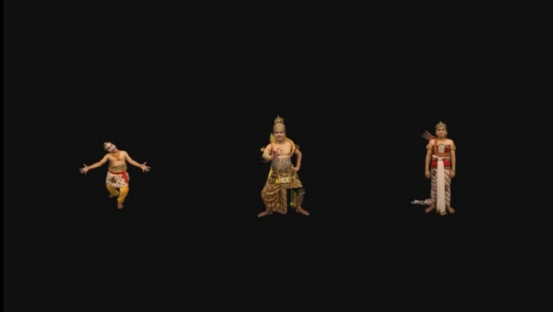
Tintin Wulia – Fallen
Video projection (single-channel), 18’43”, 2011

Documentation is crucial to history. It asserts the realness of what happened in the past, and thus builds some kind of faith. A documentary often invests in this kind faith and play with it. The nation-states often need this kind of faith from its citizens, thus they often rely on documentary and documentation.
Fallen is a part of the artist’s body of works on border and chance. It is neither documentation nor a documentary, although it was based on a somewhat real event. Following the path of skepticism that the real event was based on, the documentation is dramatized: it is heavily edited, and lightly presented with enchanting music.
The impossibility of tracing the sequence of events is the impossibility of tracing what is real. Has it fallen, or will it fall? Time, they say, is a big ball of yarn. History, they say, repeats itself. Like an image of an alluring Hades, Fallen keeps repeating itself in infinity. The sequence of images and sounds gradually builds into becoming a solid conceptual object that leaves the space where it originates, and occupies another space that is more than four-dimensional.
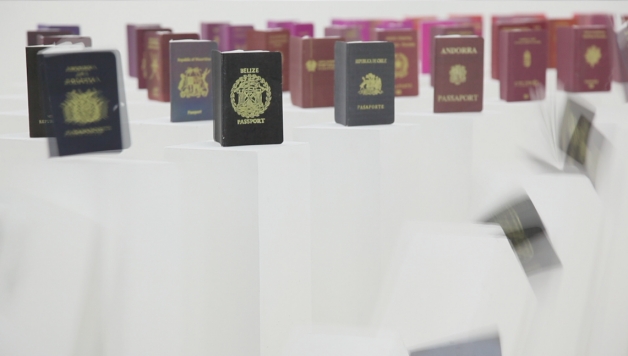

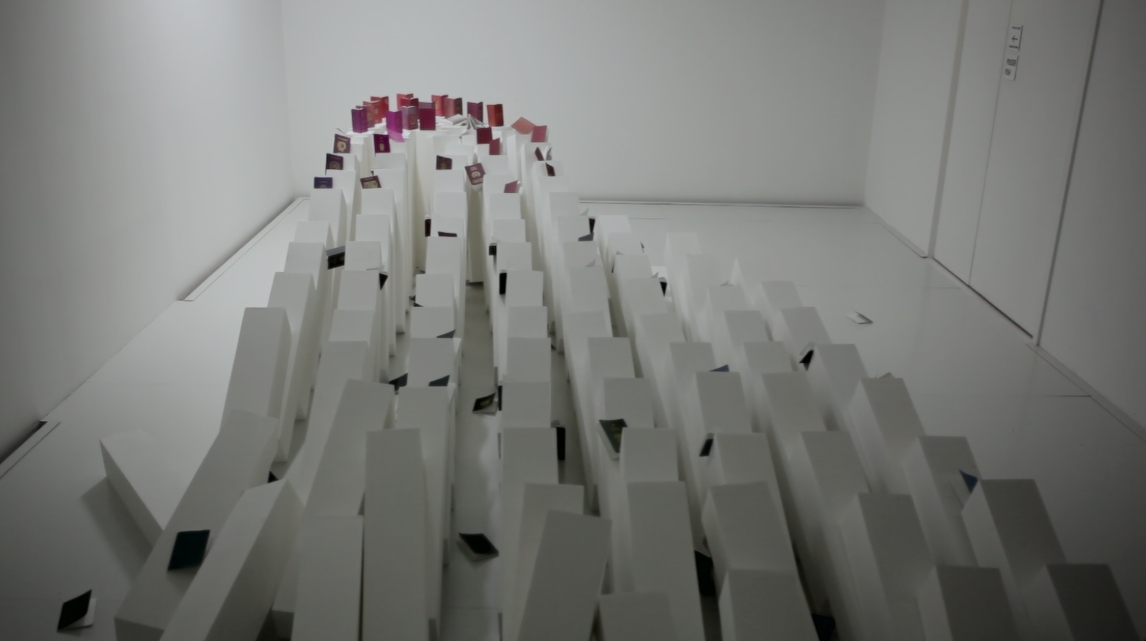
The Lepidopters – Slave Pianos, Punkasila
Video projection (single-channel), loop, 2014
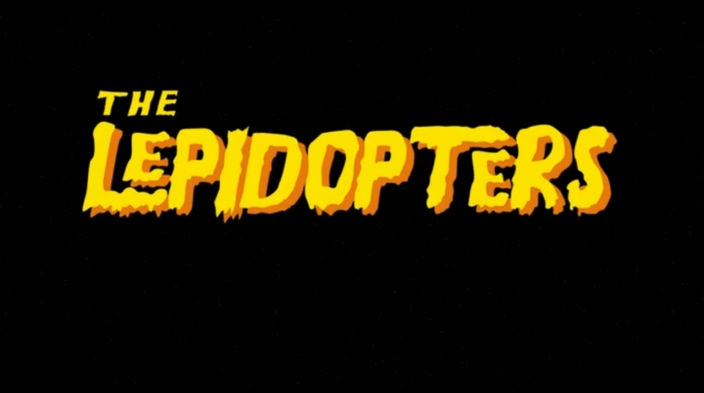
A kulturnautic expedition defying the sovereign borders of visual arts and music, The Lepidopters is a comic and space-opera written by sci-fi writer Mark von Schlegell (Cologne) and illustrated by Erwan ‘Iwank’ Hersisusanto (Yogyakarta) in which alien moths invade the Indonesian archipelago with the aim of colonising Earth through inter-species reproduction. Terra Bajraghosa (Yogyakarta) made this film using the comic and archival materials for multi-art-form concerts by SLAVE PIANOS and PUNKASILA in Hobart, Yogyakarta and Melbourne and draws on the work of Robert Smithson to investigate sonic landscapes and dystopian visions, Indonesian telepathy and ancient Javanese mysticism.

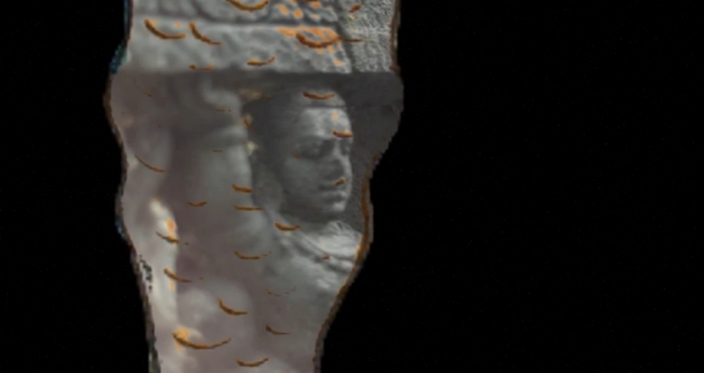
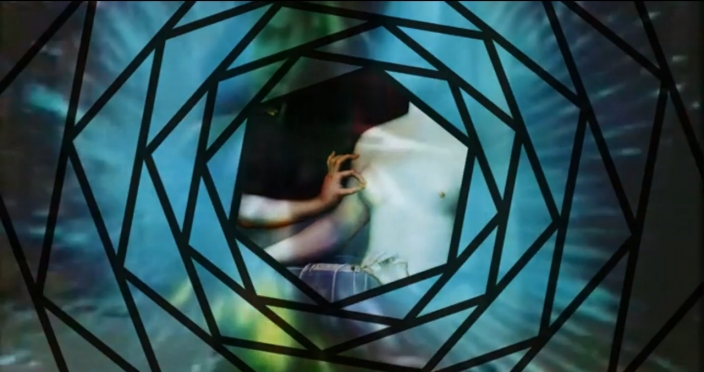
Img 3, 5 Courtesy of Krisna Murti
Img 7, 9 Courtesy of the Tintin Wulia, Louis Vuitton Malletier and Osage Gallery
Img 10, 12, 13 Courtesy of Slave Pianos and Pukasila




[…] Sorrento, Italy, and I couldn’t be happier about it. In sultry Rome I was super-busy setting up the screening of Indonesian video art, so I wasn’t really able to keep a routine, which was good. In fact, my routine entails intense […]